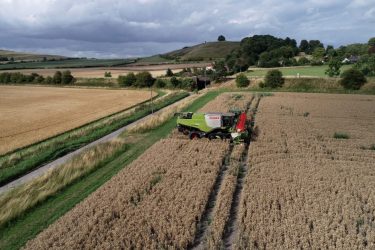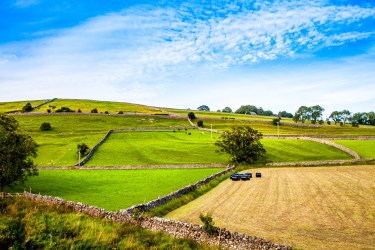By John Giles
While 31 January saw what might be the beginning of the end for the UK’s ties with the European Union, for many of us in the agri-food sector, the serious conversations about Brexit are only just beginning.
In the three years since the referendum, Brexit has dominated discussions about our future relationships not just with Europe, but the rest of the world too — and those debates are about to heat up.
As well as pending discussions on a potential US – UK free trade deal, we can expect similar trade conversations with China, India, Australia, New Zealand and Canada to name but a few.
None of these are likely to be as simple as the UK might like and will all take time to negotiate — especially when, as is likely, the real debates about how the likes of Canada, Australia and New Zealand can access the UK market begin in earnest.
Agricultural powerhouses
It seems as if our first targets for new trade deals are largely with countries that can be described as ‘agricultural power houses’; those who want to export to the UK, as much as they might want to import high-value food and drink products from us.
What’s more, there’s genuine concern about the thrust of any deal with the US — will, for example, the Americans want to send us poultry, beef and soybeans which have been produced to very different standards to the UK, as well as gain access to the National Health Service as part of their trade agreement?
In our experience, gaining market access from a regulatory perspective is only half the battle.
Even if the UK manages to secure favourable trade agreements, UK companies need to be prepared to invest time, resources and effort to build exports.
What’s more, while markets such as India and China might be highly attractive, exporters have also got to be prepared for how complex and demanding those new opportunitiescan be. And we will rarely be the first cab on the rank – others will have been doing business for some time already in these markets.
Glass half full approach
Back to Brexit, and there is still much to be agreed as to how our departure from the EU will work on the ground.
There’s now less than a year to work on the key issues such as the nature of trade tariffs and non-tariff barriers between the UK and the EU, the movement of labour, and the highly sensitive issue of the Irish border.
In public, everyone says they want a deal on all these things, but the threat of No Deal remains.
The current government seems very bullish after its huge election win and has said it will walk away from these talks, if rapid progress is not made soon. Our colleagues in the rest of the EU might not see it quite the same way, of course. There could still well be a lot of water to flow under the bridge on this one.
All of these issues have massive implications for the UK’s agri-food sector.
The three years of uncertainty since the referendum has seen UK food industry often unsure — and unable — to know what to plan for and when.
It is clear that we still want to have good access to EU markets, especially for UK exports of meat and dairy products, which are still highly dependent on customers across the EU.
Ironically, we had perfect access to the rest of the EU until we decided to leave the EU. And in many commodity areas, we are still very dependent on imports from our EU partners, especially in areas such as fruit and vegetables, wine and food ingredients.
The stakes are still high though, and government must find a way of resolving complex issues which are full of political, economic and social challenges.
But no one can just indefinitely play a waiting game to see how those challenges will resolve themselves.
What’s important is to retain a positive and flexible approach to how we deal with customers in Europe, as well as exploring the opportunities that are apparent in what might become our ‘new’ trading partners. This is no easy thing, but something Promar’s sustainability team can help on.
It’s critical that UK agri food businesses assess carefully what is happening and have an ability to respond positively to the threats and opportunities they will be facing up to over the next three to five years. We have to see the glass as half full at all times.








